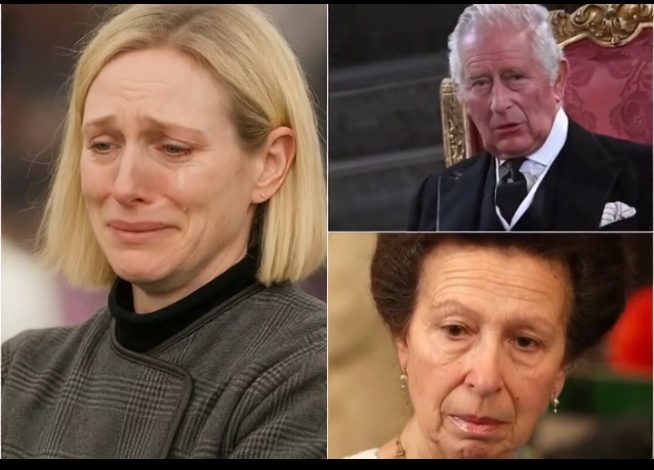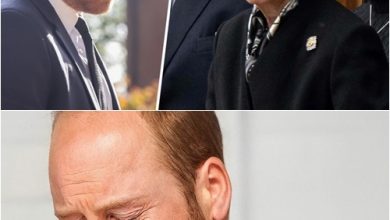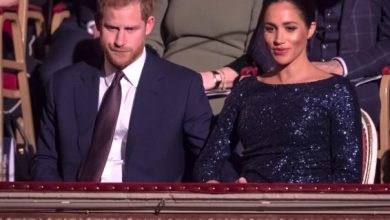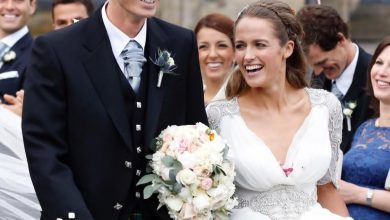It’s Official: Buckingham Palace Reveals Tragic Details About Princess Anne

It’s Official: Buckingham Palace Reveals Tragic Details About Princess Anne
Princess Anne is one of the most recognizable women in the world, having spent her entire life under the harsh glare of the royal media spotlight. Once saddled with a reputation for being dismissive and aloof, in her later years, she has come to be seen as a symbol of stability within the British monarchy. These days, in fact, the Princess Royal – a title bestowed upon her by her mother, Queen Elizabeth II, back in 1987 — is better known for her work with various charities and her relentless schedule of public appearances, more than any other member of her family.
Growing up in palaces and being attended to by servants is certainly not without its perks. Yet life hasn’t always been the proverbial bed of roses for this redoubtable royal; there’s no denying that she has experienced her share of sadness, disappointment, and loss during the course of her seven decades of life. To find out more about the sorrowful aspects of her life, read on to discover some tragic details about Princess Anne.
Princess Anne was separated from her family at boarding school
The second child of Queen Elizabeth II and Prince Philip, Duke of Edinburgh, Princess Anne, was born in 1950. The little royal was less than 18 months old when her mother ascended to the throne of England. The princess’s care was entrusted to nannies, while her education came from tutors behind castle walls.
While that may seem to be a distant relationship between parents and their child, it mirrored the childhood experienced by the queen, who viewed that arrangement as totally normal. “She had been brought up in that style herself, after all, with her parents leaving her at home and entrusting her entire schooling to a governess and home tutors,” royal biographer Robert Lacey explained to Town & Country. At age 13, Anne was sent to Benenden School, a posh boarding school in Kent, outside of London.
While the queen has been characterized as a somewhat distant mother, often unavailable for her children, Anne has refuted that. While she conceded that she recognized that time with her mother would be limited, Anne didn’t believe that made her a poor parent. “I simply don’t believe there is any evidence whatsoever to suggest that she wasn’t caring,” the Princess Royal stated in a 2002 interview for the British documentary series, “Queen and Country,” as reported by BBC News. “I don’t believe any of us for a second thought she didn’t care for us in exactly the same way as any other mother did.”
She Never enjoy growing up as a royal
Princess Anne may have grown up with all the trappings of royalty, but that didn’t necessarily mean that she found it all to be particularly enjoyable. While she’s generally regarded as the hardest-working member of the royal family, there was a time when she seemingly felt resentful of the duties that she was expected to undertake. As Great British Life reported, she once told an interviewer, “I didn’t ask to be born a princess!”
This was particularly true when she was a teenager and was forced to accompany her family on royal walkabouts, in which the royals would hit the streets to mingle with regular folks. At the time, those walkabouts were a new phenomenon, introduced during the 1970s in hopes of making the royal family more popular with the British public.
Interviewed for the BBC documentary, “The Queen: Her Commonwealth Story,” Anne revealed that the dreaded walkabout quickly became the least favorite royal duty for both her and her older brother, King Charles III, who has also experienced his share of tragedy. “We hated them, can you imagine as teenagers? Hardly the sort of thing you would volunteer to do,” Anne recalled, as reported by Hello! “It gets easier but can you imagine? How many people enjoy walking into a room full of people you’ve never met before and then try a street.”
She was the victim of an armed kidnapping attempt
Easily the most harrowing event in Princess Anne’s extraordinary life occurred in 1974, when she and her first husband, Captain Mark Phillips, were being driven back to Buckingham Palace, and a car blocked their path. That car’s driver, Ian Ball, was armed with a pistol, intending to kidnap the princess. Immediately, Ball fired, hitting the princess’s chauffeur, and also shooting Jim Beaton, her security officer. A journalist who tried to intervene also took a bullet. Ball, still brandishing his weapon, ordered Anne to exit her car. She responded with the steely grit that would become her hallmark, uttering the now-iconic words, “Not bloody likely.”
The kidnapping attempt was foiled by sheer coincidence. Ronnie Russell, a boxer, happened to be walking by at that moment, saw the chaos unfolding, and punched Ball in the back of the head. While the hero attended to Princess Anne, Ball approached Russell, but the boxer knocked the would-be kidnapper to the ground with an expertly thrown punch to the jaw. “He was flat on the floor face down. I jumped on his back for good measure. I could have died, yeah, but I knew what I was doing,” Russell told The Mirror. “The only person I did not want to get shot was Princess Anne.”
Ultimately, Anne emerged unscathed, and the men who were shot all survived. Not only did Russell receive a medal from Queen Elizabeth herself, the monarch also paid off his mortgage.
Her contentious relationship with the press led to the nickname, ‘Her Royal Rudeness’
Princess Anne didn’t have the greatest reputation for civility in her younger years, something that was particularly true in her dealings with the British press. As royal expert Sally Bedell Smith wrote in her book, “Elizabeth the Queen: The Life of a Modern Monarch,” Anne had a tendency to be brusque and dismissive with journalists. “When she began taking on more royal duties in the 1970s she had appeared supercilious and short-tempered, particularly with journalists, whom she couldn’t abide,” Smith wrote, noting how Anne had told members of the press to “Naff off!” while competing in an equestrian event.
The press responded by creating a nasty nickname, referring to Anne in newspapers as “Her Royal Rudeness.” As the voiceover narrative declared in the 2002 documentary “The Real Princess Anne” (via Express), “The Princess Royal is often in trouble. Unlike the kidnap attempt, it’s usually trouble of her own making. She has been accused of being rude, sulky and, difficult.”
That attitude wasn’t just reserved for the British press. When Anne paid a visit to Washington, D.C., she extended the same treatment to American journalists. “She was very bad-tempered, very sulky, she really didn’t want to be there, that was the impression one had,” journalist Joy Billington recalled for the documentary. According to Billington, when one member of the press asked for her thoughts about the Washington Monument, instead of answering she stated that she didn’t do interviews.
Her Olympic dreams were nearly ruined by a freak accident
One of the best-known facts about Princess Anne is that she inherited a lifelong love of horses from her mother. Over the years, Anne has proven herself to be a skilled equestrian — so much so, in fact, that she competed on the British equestrian team at the 1976 Olympic games in Montreal, Quebec, Canada.
Prior to making the games, however, she suffered an accident that placed her Olympic dreams in doubt. While training, Anne’s horse accidentally fell and wound up rolling over the princess. That left her with bruises, a concussion, and a hairline fracture on a vertebra. Her concussion, however, had left her with no memory of the accident. “It was going very well and then I don’t remember anything else,” she said at the time, as reported by Tatler. “Nothing at all.”
She wound up spending four days in a hospital, with doctors predicting she would be able to resume riding in a few weeks. That prediction came to pass, and she did make the Olympic team. Ultimately, she competed in Montreal, but didn’t earn a place on the podium.
Princess Anne was compared negatively to Princess Diana
While Princess Anne eventually rehabilitated her image — transforming over the years from the snarkiest royal to the hardest-working one — the introduction of royal rebel Princess Diana into the family certainly didn’t assist that transition. During the years prior to Diana’s divorce from King Charles III, the media’s often-fawning coverage of the “people’s princess” contrasted sharply with that of “Her Royal Rudeness.” Nowhere was that contrast more apparent than in the respective behavior that the sisters-in-law displayed toward children, with Diana praised for her empathetic ability to connect with youngsters, while Anne appeared terse and formal.
While Diana and Anne were hardly besties, they were at least cordial with each other. “We get on incredibly well, but in our own way,” Diana told Andrew Morton for his book “Diana: Her True Story — in Her Own Words,” as excerpted in Vanity Fair. “I wouldn’t ring her up if I had a problem, nor would I go and have lunch with her, but when I see her it’s very nice to see her,” Diana added, insisting she had immense respect for Anne. “Her mind stimulates me, she fascinates me, she’s very independent and she’s gone her own way.”
Her first marriage ended in a scandalous divorce
Princess Anne married Captain Mark Phillips in 1973, tying the knot within the gothic splendor of Westminster Abbey. By the time they separated in 1989, the marriage had become engulfed in scandal, with both spouses having allegedly been unfaithful.
Both British and international newspapers had been bursting with gossip about the two, who were reportedly not particularly discreet with their respective dalliances. As the Chicago Tribune noted at the time of the split, “Phillips had semi-public affairs with a British television anchorwoman, a Canadian public relations executive, and even with an Indian call girl, Pamella Bordes.” Publications also mentioned Anne’s reported affairs with actor Anthony Andrews, her bodyguard, and the queen’s equerry, Commander Timothy Laurence (the latter would go on to become her second and current husband).
It wasn’t until years after their divorce that an even-more scandalous secret emerged: Phillips had fathered a child during a one-night dalliance with Heather Tonkin, a New Zealand art teacher, while he and Anne were still married. Eventually, Phillips was forced to take a DNA test, which proved he was indeed the child’s father.




